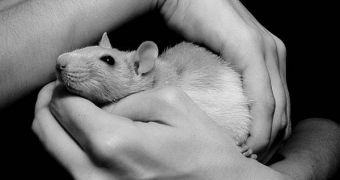The European “ICEA” project is a continental-sized endeavor of creating artificial intelligence-operated systems that could benefit mankind, especially in the field of medicine. As part of this program, British researchers from the University of the West of England, the University of Bristol – who together formed the Bristol Robotics Lab (BRL) – and the University of Sheffield have developed the first whiskered robot in the world, called SCRATCHbot. The machine is able to detect things that are in its path using these constructs alone, and the team behind it hopes to be able to use it for medical applications. The robot will be presented this week at an international workshop.
The basic inspiration for the machine was once again taken from nature, especially from those animals who prefer to roam around at night, or in other poor-illuminated conditions. For these creatures, sight is not the most important sense, but touching and feeling, as this is the main way they scout their surroundings and draw information about the environment. Among these animals, rats are in the top places for their ability to recreate a map of their surroundings using nothing more than their whiskers.
When they encounter an object in their path, regardless of any light being present or not, they are able to accurately and rapidly assess its size, shape and threat level, by using nothing more than rhythmic sweeps of their whiskers. It was this amazing ability of recreating environments virtually, without the use of sight that inspired the UK research team. For a long time, robot technologies have relied on using the sense of sight as the main method of identifying objects.
However, this means that the machines cannot be used in the places they are needed most, such as in burning buildings, or in smoke-filled tunnels. With the new sophisticated technology that went in SCRATCHbot's whiskers, the goal of being able to navigate a totally obscured area with no outside intervention has been brought a few steps closer.
“For a long time, vision has been the biological sensory modality most studied by scientists. But active touch sensing is a key focus for those of us looking at biological systems which have implications for robotics research. Sensory systems such as rats’ whiskers have some particular advantages in this area. In humans, for example, where sensors are at the fingertips, they are more vulnerable to damage and injury than whiskers,” says Dr. Tony Pipe, of both the Bristol Robotics Lab and the University of the West of England, quoted by ScienceDaily.
“Rats have the ability to operate with damaged whiskers and in theory broken whiskers on robots could be easily replaced, without affecting the whole robot and its expensive engineering. Future applications for this technology could include using robots underground, under the sea, or in extremely dusty conditions, where vision is often a seriously compromised sensory modality. Here, whisker technology could be used to sense objects and maneuver in a difficult environment. In a smoke filled room for example, a robot like this could help with a rescue operation by locating survivors of a fire. This research builds on previous work we have done on whisker sensing,” he concludes.

 14 DAY TRIAL //
14 DAY TRIAL //